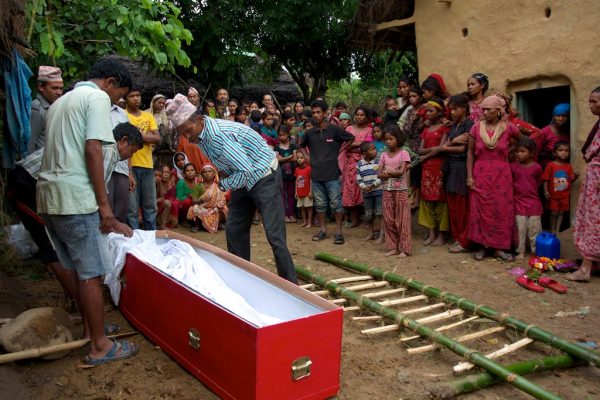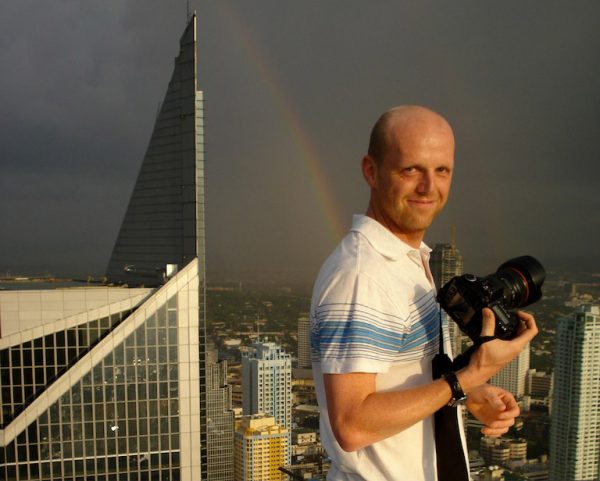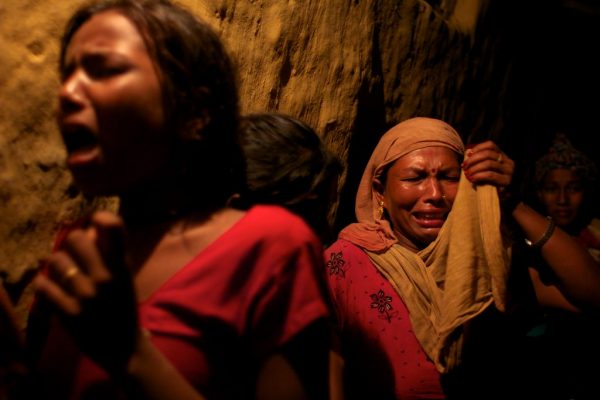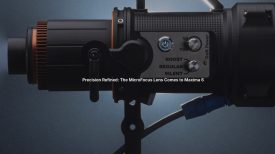By site editor Dan Chung:
Pete Pattisson’s film about the hardships faced by migrant workers in Qatar ahead of the World Cup has made waves internationally since it was featured on the Guardian website earlier this week. Pattisson should be no stranger to followers of this site – he’s a news shooter who likes to take on challenging subjects such as the Kachin conflict in Burma. I spoke to him about his latest project:
What inspired you to do this story?
I’ve been documenting different forms of slavery around the world for a number of years now. When I say slavery I don’t mean low pay or poor working conditions; I mean people being forced to work under threat of violence or some other form of penalty. My early work on this issue was a major photographic project, Forgotten But Not Gone.
I had already made some films on slavery in the Middle East, which were published by the Guardian: here and here.
The combination of the World Cup being awarded to Qatar and the fact that I now live in Nepal created an obvious opportunity to explore this issue further.
How did you get the access? Were the families keen to talk? How did you win their trust?
Every day the bodies of three or four Nepalese migrant workers from across the Gulf and Malaysia are flown back to Nepal. Although it’s not evident in the film, I spent 11 days at Kathmandu’s airport documenting the return of these bodies and waiting for a case which I thought would illustrate some of the main issues facing migrants in Qatar. That case was the story of Ganesh Bishwakarma, which features in the film. Ganesh’s family live 12 hours drive from Kathmandu, but fortunately their village is close to a very well respected NGO, Backward Society Education which I already had links with. They were instrumental in arranging the logistics for me, including travel, accommodation and a translator.
The families I spoke with at the airport were almost always willing to talk. Many of them were still trying to make sense of what had happened to their deceased relative (they often receive very little official information) and they were keen to discuss this.
Who funded your project? Was this commissioned by the Guardian or did you submit it to them on spec?
This was a joint project with the Guardian as part of their Modern Day Slavery in Focus series. I almost always work on my own and then deliver films on spec, so it was a really refreshing change to collaborate on a project, and to know I was going to be paid for it. On the flip side, this also brings the pressure of knowing you have to deliver.
Was it hard to work in Qatar?
Yes and no. I had some great local contacts who were able to take me to the right places and people. In one sense it is simple to find the stories I did in Qatar – the exploitation is that widespread. On the other hand it is quite risky doing this work. I could never stay at any location for very long – you just have to grab some footage and leave. You are always looking over your shoulder.
What has been the response to your Guardian story? What action would you like to see the Qataris take about the matter?
The response has been overwhelming. We all felt this story could have a big impact, but I don’t think any of us could have predicted it would be this big. There’s a real sense of anger that this is happening to some of the poorest people in the world, working in one of the richest countries in the world. And really there is no reason for the Qatari authorities, or FIFA, or the multinational construction firms not to act. If I, working with one or two local contacts, can find so many examples of abuse in just one week, it should not be difficult for the Qatari authorities to do the same and begin to enforce their own labour laws.

Do you have plans to make this into a bigger piece of work?
It’s already become far bigger than any of us imagined! I’m going to do a bit more work on the Nepali side of the story, particularly the recruitment process, which we weren’t able to cover sufficiently in the report. The Qatari government is at fault, but so is the Nepali government. It’s the combination of failings on both sides that leaves these workers trapped and exploited.
How much assistance/editorial guidance did the Guardian give you for the video?
Whenever I’m making a film for The Guardian, or a film I plan to pitch to The Guardian, I can always hear the editor’s voice ringing in my ears, “Make sure you get plenty of actuality.”
My definition of actuality is any footage, which you have to nail in one take. A funeral, a happy reunion, the Olympic 100m final. You cannot ask your subjects to re-enact any of these. It’s happening live, right in front of you, and you only have one chance to document it. And so that was one of my aims, which I think I achieved to some extent.
To make a slightly wider point however, I think there’s been a real decline in actuality, and the popularity of large sensor cameras is partly to blame for this. Large sensor cameras undoubtedly produce gorgeous images, but they are also slower to operate. They are not really suited to the chaotic, fast-moving world of actuality.
To some degree the rise of large sensor cameras has begun to determine the types of films we make, rather than the films we want to make determining the types of cameras we use. As a result we are drowning in beautifully shot but (in my opinion) tedious ‘portrait films’, travelogues overlaid with funky music and documentaries where the loudest voice is the voiceover. I’m guilty of all these things, but I’m trying to explore ways to do things differently.

Since your last blog post what have you been doing? Is video journalism now a full time profession for you?
I’m now based in Kathmandu, Nepal, but I’m still involved in both education and journalism. I love them both and I’ll continue to do both.
What gear did you use? Was the gear determined by the assignment? I assume you shot on a DSLR; could you have done it with a big camera?
I shot this on my Canon 60D, with just a Rode Videomic Pro, Canon 28mm f1.8 and 17-40mm f4 L, plus a tripod and a Rode lavalier for some of the interviews.
To be honest, I chose this gear because it’s all I’ve got! The Guardian asked me for photos as well as film, so it made sense in any case, but shooting photos and film is a nightmare. When there’s a lot of action and a little time, how do you decide which to prioritise?
However, a lot of the time I felt frustrated by the limitations of the 60D. It’s great for interviews and adequate in low light, but it’s simply not designed for the footage I was trying to get (although the autofocus on the 70D might change that somewhat).
I sometimes found myself spending so much time fussing with the camera settings that I lost focus on the story. The reality is that you don’t need (and often can’t get) the glossy footage and shallow depth of field that these cameras can produce. When you’re filming a fast moving scene, or working undercover, you can forget about attaching ND filters or changing lens. You just have to try to predict what’s going to happen and then stick with the decision. Circumstances, not aesthetics, determine so much. I shot a lot of the film at either at f1.8 or f22, not because I wanted a particular depth of field, but because there was simply not enough or too much light. The demands of the scene trumped any ‘look’ I might have wanted.
If I had the chance to start this project again, I would probably film it with a conventional camcorder. The Canon DSLRs demand too much attention. I want a forgettable camera.
Finally, the small size of the camera has its benefits, but I’m not small! A big foreigner in a labour camp in Qatar, or a village in Nepal, is what attracts attention; not the size of the camera he’s holding!

There seemed to be a lot of low light shooting – how did you work with that?
Everything I shot in the village at night as the family was receiving Ganesh’s body, and every interview in the workers’ accommodation in Qatar was shot with a Canon 28mm at f1.8. In fact, I had to discard a lot of the footage I shot at the village because even then it was just too under exposed. I would have loved to have had a 5DMk3 with me! However, I find focussing at f1.8 in low light quite easy, much more so than trying to focus at any f-stop in bright light.
What advice do you have for anyone wanting to get into video journalism? What qualities does it take to become a successful video journalist?
The challenge is to try to tell new stories in new ways. Try to break conventions. I love the film Stateless Media recently published about Anthony Weiner’s campaign for mayor of New York. It’s an outstanding example of covering the news in a fresh and different way, and something I aspire to.
CHUTZPAH from STATELESS MEDIA on Vimeo.
Second, sometimes it feels like filmmakers today have got their A-roll and B-roll mixed up. Typically the A-roll consists of an interview, pimped out with a bit of B-roll to give some context. I know I’ve done far too much of this. However, what I’m trying to do is make films where the B-roll is the A-roll. In other words, the footage of what’s happening is so compelling that it takes centre stage.
Finally, I was really inspired by what Darren ‘DC’ Conway said on this blog: “People are letting us into their lives and some on what is usually their worst day. Sometimes they are heartbroken or just broken; they are vulnerable, they are confused and they are lost. Sometimes they are inspired or they are inspirational. No matter what, though, they generally trust us to tell their story, so use that trust and that emotion for them! It is such a privilege to be able to tell their story – don’t let them down!”






